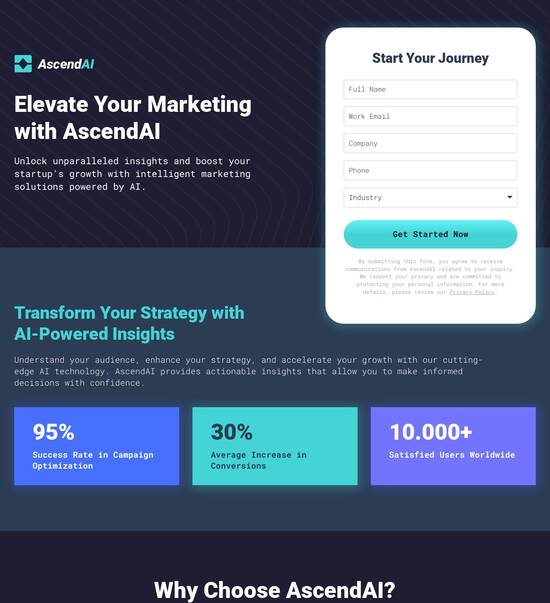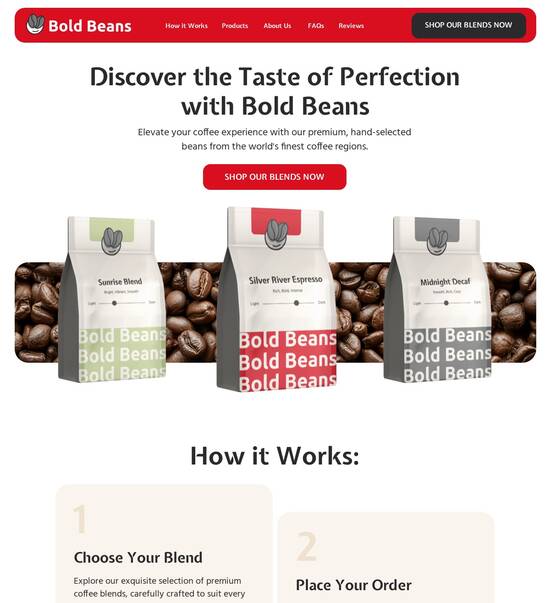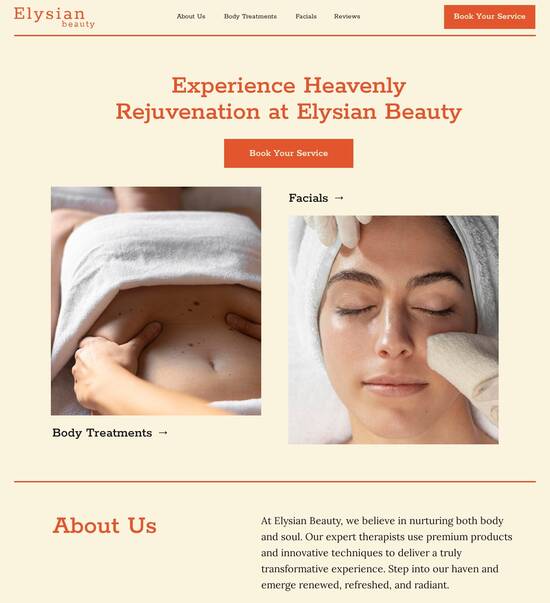
Onboarding page template for landscape architecture firms
Explore Similar TemplatesAbout template
Reach out to the right audience with onboarding page template for landscape architecture firms
Recommended templates

Easy to build without coding
With the intuitive drag-and-drop builder, anyone on your team can create high-converting pages without any knowledge of code or design. Make enhancements to your landing page with custom widgets using Javascript, HTML/CSS, or third-party scripts.

Multiple layouts for any industry and goal
Select from 500+ landing page layouts built to boost conversions across industry-specific scenarios. Customize them by adjusting fonts, adding images, and generating on-brand content with the AI assistant. Quickly scale with Instablocks® and Global Blocks that you can save, reuse, and update globally.

Loads fast and looks polished on any device
Every template is responsive, which means they present professionally on any device and load blazingly fast with our Thor Render Engine. You can also power them up with Google AMP technology to deliver an unparalleled mobile experience and drive higher conversions.

Robust analytics & experimentation
Get real-time updates and reporting across all your devices, showing the number of visitors, conversions, cost-per-visitor, and cost-per-lead. Launch AI-powered experiments, run A/B tests, and use heatmaps to analyze user behavior, then optimize your landing page to maximize conversions.







Easy to build without coding
With the intuitive drag-and-drop builder, anyone on your team can create high-converting pages without any knowledge of code or design. Make enhancements to your landing page with custom widgets using Javascript, HTML/CSS, or third-party scripts.
Multiple layouts for any industry and goal
Select from 500+ landing page layouts built to boost conversions across industry-specific scenarios. Customize them by adjusting fonts, adding images, and generating on-brand content with the AI assistant. Quickly scale with Instablocks® and Global Blocks that you can save, reuse, and update globally.
Loads fast and looks polished on any device
Every template is responsive, which means they present professionally on any device and load blazingly fast with our Thor Render Engine.
Robust analytics & experimentation
Get real-time updates and reporting across all your devices, showing the number of visitors, conversions, cost-per-visitor, and cost-per-lead. Launch AI-powered experiments, run A/B tests, and use heatmaps to analyze user behavior, then optimize your landing page to maximize conversions.
All the features you need to build lead-generating landing pages
Explore more featuresLearn how to build top-performing landing pages for any goal
FAQs
Leading the way in building high-performing landing pages





Maximize Your ROI with Instapage's Landing Page and CRO Platform
Instapage is the all-in-one solution for creating landing pages that drive conversions for your marketing campaigns. Whether you're a small business or a large enterprise, the flexibility and powerful tools offered can help you increase your ROI, regardless of your budget.
Why Choose Instapage for Your Landing Pages?
Instapage offers a user-friendly interface and efficient tools designed for marketers looking to create high-performing landing pages. With over 100 conversion-focused templates and dynamic personalization options, your campaigns can be rapidly optimized to achieve precise results.
- Ease of use: Instapage allows you to build landing pages without any coding knowledge, making it accessible for all team sizes.
- Customization: Tailor your landing pages with dynamic content and personalized experiences that resonate with your specific audience.
- Analytics: Gain insights into user behavior with detailed heatmaps and analytics, allowing for data-driven adjustments to improve performance.
Step-by-Step Guide to Creating a High-Converting Landing Page
Launching a successful landing page involves several steps. First, you need to choose the right template that aligns with your campaign goals. Here’s how to get started:
Select the Right Template and Customize Your Content
Begin by browsing Instapage's template library. Choose a layout that matches your business objectives, then personalize the text, images, and calls-to-action.
- Template selection: Use pre-built templates designed for high conversion rates.
- Personalization: Insert dynamic text replacement for tailored messaging.
- Visual appeal: Use high-quality images and branding elements to engage visitors.
Optimize with A/B Testing and Analytics
Once your landing page is live, utilize Instapage's built-in A/B testing features to discover which elements work best for your audience. Analyze user interactions through heatmaps to refine your approach.
- A/B testing: Compare variations of your landing page to find the most effective design.
- Heatmaps: Understand where users click most, allowing for targeted adjustments.
- Continuous improvement: Regularly update your pages based on performance metrics to ensure ongoing optimization.
Following these steps ensures you’re not only creating a landing page but also setting the stage for successful digital marketing that drives conversions.
Start your journey with Instapage today to unlock the full potential of your marketing campaigns. Sign up for a free trial and discover how easy it is to create effective landing pages that convert.
Crafting the perfect onboarding page template for landscape architecture firms
Understanding the importance of effective onboarding in landscape architecture
The onboarding process is crucial in landscape architecture firms as it sets the tone for client engagement and project success. Onboarding involves guiding clients through the early stages of a project, nurturing the relationship, and ensuring that expectations are clearly communicated. A well-organized onboarding page serves as a central hub where clients can find necessary information, thereby enhancing their overall experience and engagement.
The impact of a well-designed onboarding page on client relationships cannot be overstated. It fosters trust and transparency, paving the way for smoother project progression. Statistics indicate that effective onboarding can lead to a 60% increase in client satisfaction and a 70% boost in client retention rates. By investing in an efficient onboarding page, firms can significantly reduce the likelihood of client churn.
Improved client understanding of services and processes.
Reduction in client questions and concerns upfront.
Increased trust between the firm and the client.
Key features of an effective onboarding page template
User-centric design elements are fundamental for an effective onboarding page. The goal is to create an intuitive navigation experience where clients can easily find information. Simple, well-defined pathways guide users through complex content. Incorporating clarity in design through strategic layout choices can maximize user flow, making the onboarding process efficient and enjoyable.
Branded aesthetics are another critical feature. Using RGB color concepts aligned with brand identity can significantly enhance visual appeal. Color psychology plays a crucial role in how clients perceive a firm; for instance, greens can evoke feelings of tranquility and growth, echoing themes prominent in landscape architecture. By aligning RGB palettes with the firm’s values and project themes, clients gain a deeper connection with the firm's vision.
Clear and concise navigation structure.
Consistent branding throughout the page.
Visual elements that represent the firm's mission.
Visual storytelling: Utilizing images and icons
Images hold immense power in onboarding. High-quality imagery can showcase completed projects effectively, helping clients visualize the results of their investment. Suggested image types, such as before-and-after transformations or detailed shots of the work in progress, are essential for demonstrating capability and professionalism. Additionally, maintaining an organized image ID system fosters clarity and consistency in visual collections.
Effective use of icons is another strategic method. Simplifying complex information through iconography allows for immediate comprehension among clients. When used wisely, icons can represent various aspects of engineering and architecture, such as services offered, project phases, and sustainability measures. This visual shorthand encourages quicker scanning of content, which is invaluable on an onboarding page.
Incorporate high-resolution images of ongoing and completed projects.
Use icons to represent project services clearly.
Organize images with appropriate IDs for easy access.
Step-by-step webpage walkthrough
Creating a tailored experience for new clients begins with a bullet-point checklist outlining key onboarding page essentials. Each bullet should represent crucial pieces of information or functionalities that clients may require as they embark on their journey with the firm. Visual walkthroughs showcasing a typical onboarding process provide clarity and assurance, ensuring that clients feel supported from the outset.
Additionally, integrating user testimonials and case studies enhances credibility and relatability. Clients who see others' positive experiences are more likely to feel confident about engaging with the firm. This dual approach of using structured content checklists along with narrative testimonials creates a comprehensive onboarding experience that informs and inspires.
Easy-to-follow checklist of important steps.
Visual aids illustrating the onboarding stages.
Curated testimonials from past clients.
Multi-country onboarding solutions
A global perspective is essential in landscape architecture, particularly with firms servicing international clients. Adapting onboarding pages for various cultural contexts ensures that communication resonates with clients from different backgrounds. Considering language and localization is crucial; providing translations and culturally relevant examples enhances relatability and trust.
Moreover, understanding regulatory aspects across different countries cannot be overlooked. Each region may have unique requirements that impact project execution. Highlighting this knowledge on the onboarding page positions the firm as an informed partner, ready to navigate any challenges that may arise due to local regulations.
Multilingual content options for broader reach.
Cultural considerations in visuals and text.
Awareness of local regulations and practices.
Information architecture: Structuring content for clarity
Effective onboarding pages must prioritize content organization. Structuring content into manageable sections allows clients to navigate information quickly, thus improving their experience. Essential components include sections for FAQs, detailed outlines of services provided, and projected timelines for project phases. Clear segmentation aids in preventing information overload and enhances clarity.
Utilizing captions is another critical aspect that bolsters information delivery. Crafting compelling captions to support visuals adds depth and context, making it easier for clients to digest information. Employing best practices for caption length, style, and placement can significantly improve overall communication effectiveness on the onboarding page.
Organized sections for easy information retrieval.
FAQs addressing common client inquiries.
Descriptive captions accompanying visuals.
Collaborating with contributors: A team approach
Highlighting team contributions can add a personal touch to onboarding pages. Acknowledging the integral role of project contributors not only humanizes the firm but also showcases diverse expertise. Clearly presenting individual team members’ qualifications and experiences builds confidence among clients regarding the firm’s capability to meet their needs.
Incorporating collaborator profiles enhances credibility even further. Best practices for profile layout include concise bios, images, and links to featured projects, allowing clients to understand the team better. These elements should tie back to the firm's overall branding and professional ethos, helping clients feel connected to the people behind their projects.
Profiles detailing individual team members’ expertise.
Visual representations of contributors.
Links to previous projects by team members.
Building trust through transparency
Clarifying copyright and project ownership is vital for establishing trust. The onboarding page should outline copyright information clearly, detailing the rights clients have regarding designs and materials created during the project. Addressing intellectual property considerations within landscape architecture helps clients understand how their projects will be managed.
Furthermore, informing clients about necessary releases and legal considerations can preempt misunderstandings. Structuring onboarding content to address legal disclaimers ensures transparency, empowering clients with knowledge about what to expect throughout the project duration.
Explicit copyright statements regarding project content.
Discussion of intellectual property rights.
Information on legal releases needed for project initiation.
Conclusion: The future of onboarding pages in landscape architecture
As technology evolves, so too does the potential for innovative solutions in onboarding page design for landscape architecture firms. Trends such as interactive onboarding experiences and the use of augmented reality could revolutionize how clients engage with content. Moreover, automation and AI stand to optimize onboarding experiences further, tailoring content to client needs dynamically.
Finally, adapting to client needs through continuous improvement practices is crucial. Gathering ongoing feedback allows firms to refine their onboarding pages continually, ensuring that they adapt to changing client expectations. By recommending methods for evaluating onboarding success, firms can create a transparent, responsive framework that solidifies trust and fosters lasting relationships.
Exploration of new technologies in onboarding design.
Strategies for mastering client feedback collection.
Iterative testing for onboarding page effectiveness.
Ready to skyrocket conversions?
Supercharge your ad campaigns with high-performing landing pages
Get started














